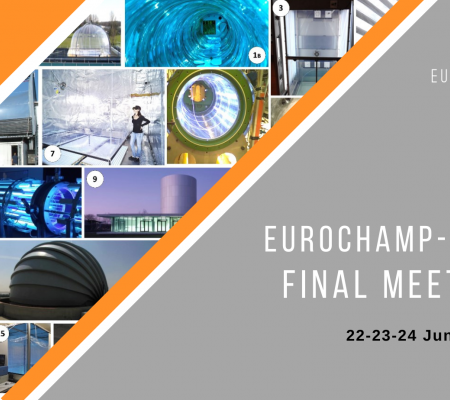| General information | |||||||||||||||||||||||||||||||||||||
| Access mode | Physical access | ||||||||||||||||||||||||||||||||||||
| Infrastructure name and acronym | Manchester Aerosol Chamber – Manchester Ice Cloud Chamber coupled facility (MAC-MICC) | ||||||||||||||||||||||||||||||||||||
| Photos |
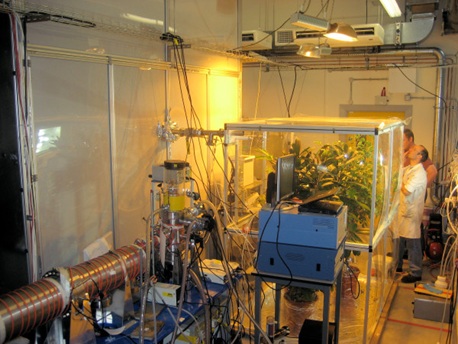 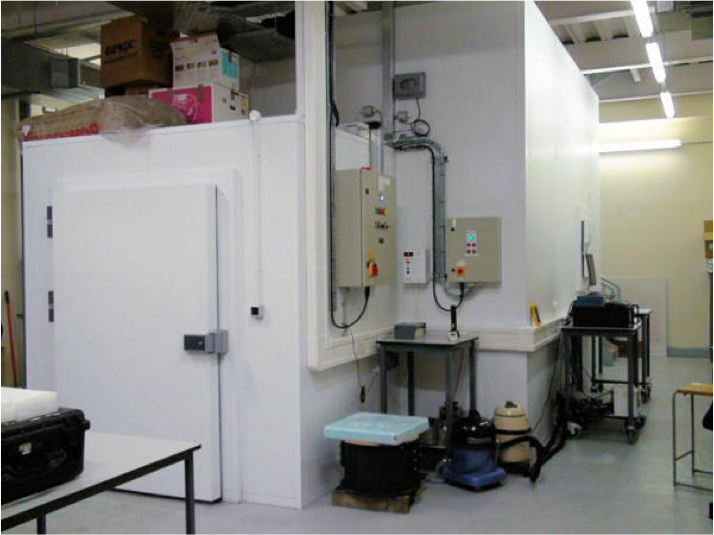 |
||||||||||||||||||||||||||||||||||||
| Location | Manchester, United Kingdom | ||||||||||||||||||||||||||||||||||||
| Website |
http://www.cas.manchester.ac.uk/restools/aerosolchamber/ http://www.cas.manchester.ac.uk/restools/cloudchamber/ |
||||||||||||||||||||||||||||||||||||
| Legal name of organisation operating the infrastructure | 53.4668° N, 2.2339° W The University of Manchester Simon Building, G.04 Oxford Road, Manchester M13 9PL United Kingdom |
||||||||||||||||||||||||||||||||||||
| Description of the infrastructure | |||||||||||||||||||||||||||||||||||||
| Brief general description of the infrastructure to which access is offered |
The infrastructure comprises a pair of coupled chambers within the Centre of Atmospheric Sciences (CAS), at the University of Manchester that may be accessed together or as separate installations. The Manchester aerosol chamber (MAC) has been designed to study atmospheric processes of multicomponent aerosols under controlled conditions. The Manchester Ice Cloud Chamber (MICC) is a fall-tube 10 m tall and 1 m in diameter, spanning 3 floors with a cold room on each, capable of reaching temperatures as low as -55°C. The chamber can also be pressure sealed and evacuated to as low as 50 mbar to simulate conditions found in the upper troposphere. Liquid water, mixed phase, or entirely glaciated clouds can be generated in the chamber, with cloud liquid water contents ranging from zero to the highest values found in nature. |
||||||||||||||||||||||||||||||||||||
| Services currently offered by the infrastructure and its research environment | The service offered by the infrastructure include : - Access to a complete appropriate instrumentation payload to each / both chamber(s) - Technical assistance by highly trained staff - Scientific assistance by permanent research staff - Copy of all the level 0 data at the end of the campaign - Data treatment up to level 1 on request - Data archival (>10 years) on the secure UMAN data server - Guest office for up to 4 guests and internet access - >200 m2 ground floor lab space plus basement / 1st floor MICC lab, easy access to guest instrument with goods lift - 24h access to the lab if requested support for ordering chemicals and consumables. |
||||||||||||||||||||||||||||||||||||
| Modalities of access and support offered under EUROCHAMP-2020 | |||||||||||||||||||||||||||||||||||||
| Typical duration of work |
Between 1 and 4 weeks. A typical experimental plan includes 2-3 days of careful experimental preparation (connection of potential external instruments and training on use of the chamber and the main instruments), then 10 days of experiments (1 experiment/day with 1 to 2 days of cleaning and blank experiments per week), then 1-2 days for debriefing and base data formatting, saving, and distributing among the users. |
||||||||||||||||||||||||||||||||||||
| Community/user type served |
The MAC-MICC chambers are predominantly used for research projects (academic sector) though we have conducted contract experiments (e.g. engine exhaust post-treatment) and instrument trialing with SMEs. |
||||||||||||||||||||||||||||||||||||
| Scientific and technical support offered |
Training for the use of the infrastructure and the data treatment is offered. Depending on the degree of expertise of the guest, a data analysis of level 1 (AMS, corrected DMPS, HTDMA etc…) can be proposed to users. In addition, assistance in the definition of experimental conditions is offered to all groups. |
||||||||||||||||||||||||||||||||||||
| Logistic and administrative support offered |
Administrative support for ordering chemicals and consumables, logistic support for the management of chemicals, including gases. |
||||||||||||||||||||||||||||||||||||
| Person in charge of access provision at the infrastructure |
Dr. Rami Alfarra, NCAS Research Scientist and University Research Fellow, rami.alfarra@manchester.ac.uk |
||||||||||||||||||||||||||||||||||||
| Extended technical information | |||||||||||||||||||||||||||||||||||||
| Physical description |
MAC comprises an 18 m3 collapsible FEP Teflon film (3m (H) x 3m (L) x 2m (W)) in a temperature and relative humidity controlled housing. It has two arc lamps on opposite sides and a bank of halogen bulbs on one side. MICC is a 10 m tall, 1 m in diameter stainless steel cylinder housed in temperature-controlled rooms that can reach temperatures down to -55 oC for ice and mixed phase clouds and up to room temperature for liquid clouds. S/V ratio: (2.3 m^-1)Irradiation JNO2 & other J: (jNO2 = 1.54 x 10^-3 s^-1; jO1D = 1.23 x 10^-5 s^-1) RH range: (20 - 80%) MAC projected surface area: 6 m^2 MICC projected surface area: 28 m^2 |
||||||||||||||||||||||||||||||||||||
| Mechanical description | The MAC Teflon film is mounted on three horizontal rectangular aluminium frames. The central rigid frame is fixed, with the upper and lower frames free to move vertically, allowing the bag to expand and collapse as sample air is introduced and extracted. Air is supplied to the chamber by a blower at a flow of 3 m3 min-1. The air is dried and filtered for gaseous impurities and particles using a series of Purafil (Purafil Inc., USA), charcoal and HEPA filters (Donaldson Filtration, USA), prior to humidification with ultrapure deionised water. | ||||||||||||||||||||||||||||||||||||
| Instruments' list |
|
||||||||||||||||||||||||||||||||||||
| Irradiation spectra |
Figure 1: Shape of the MAC irradiation spectrum provided by high pressure xenon arc lamps operated at 4 Kw each and halogen bulbs (Solux, 4700K). The spectra were measured in the middle of chamber.

Figure 2: Shape of the MAC irradiation spectrum provided by high pressure xenon arc lamps operated at 4 Kw each and halogen bulbs (Solux, 4700K) compared to the solar spectrum measured in Manchester, UK at mid-day on a clear sky day in June. 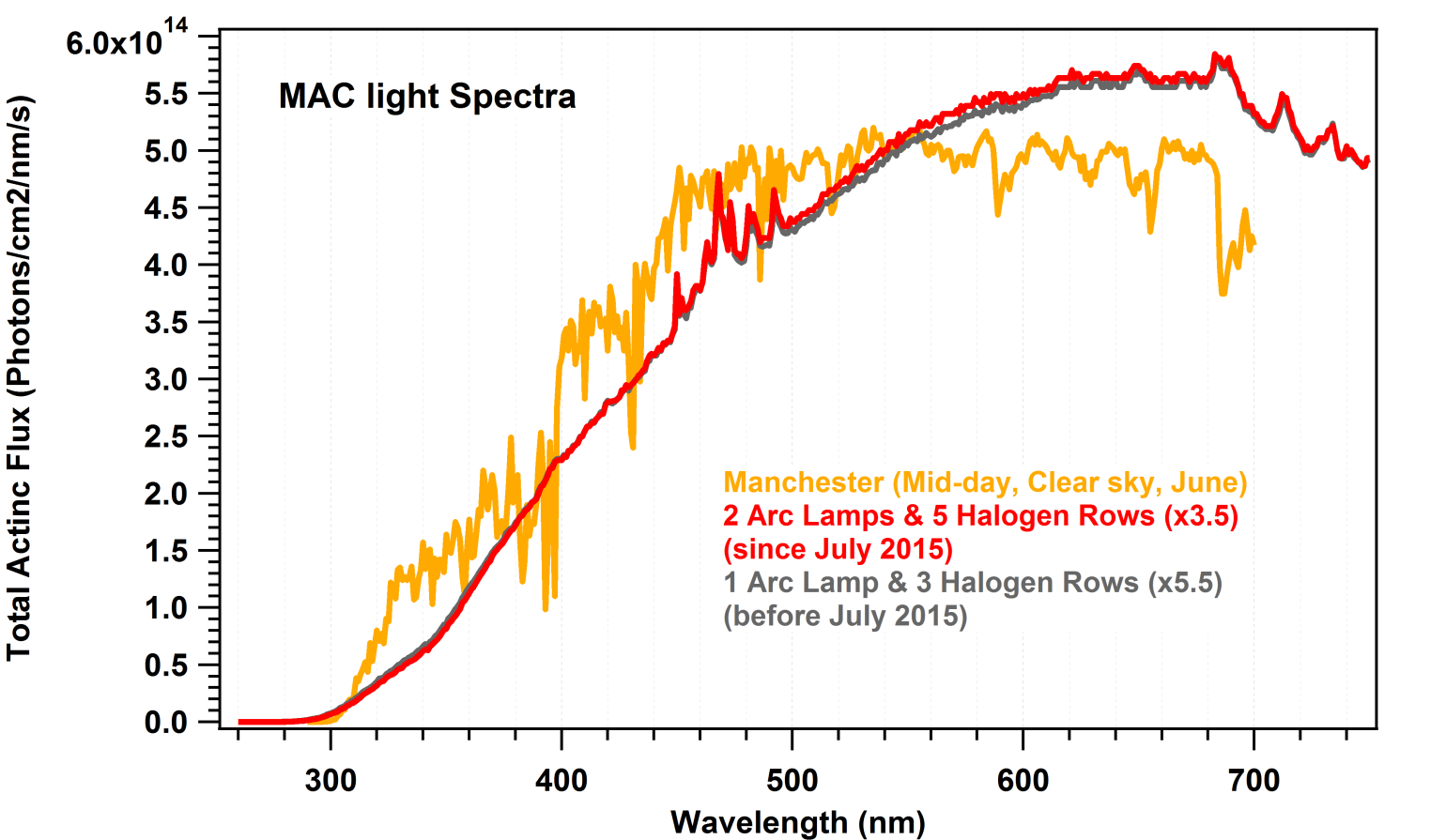
Figure 3: An illustration of the divergence between the illumination in MAC and sunlight between 290 and 330 nm using a zoomed in section of Figure 2. 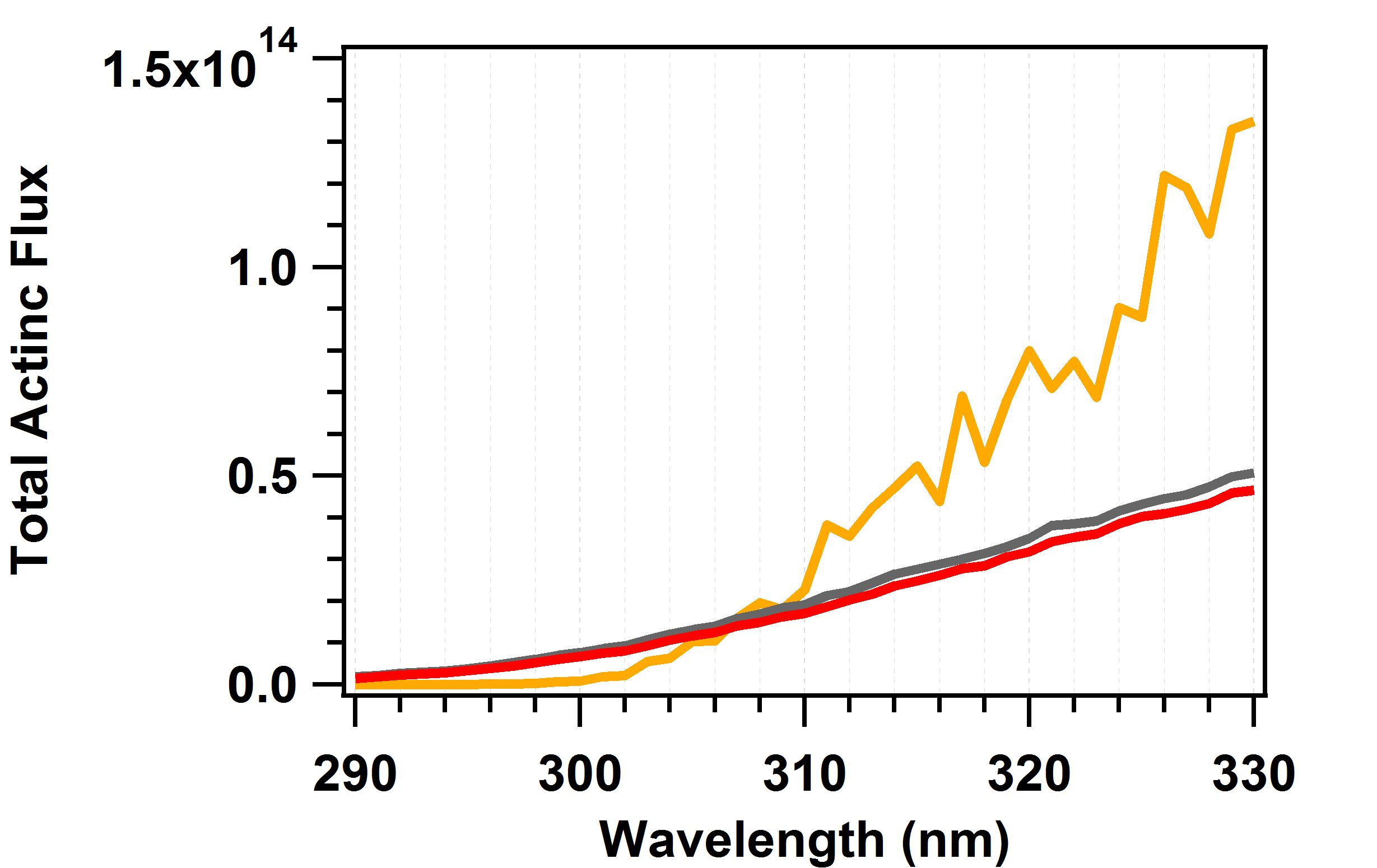 No illumination in MICC |
||||||||||||||||||||||||||||||||||||
| Size dependent aerosol loss/lifetime | 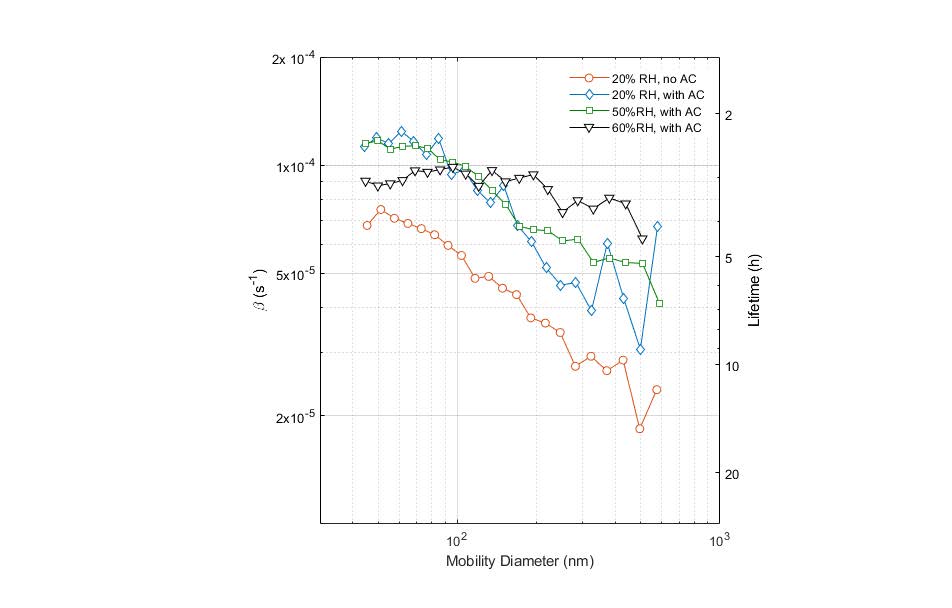 |
||||||||||||||||||||||||||||||||||||
| Auxiliary mechanism (only for MAC) | 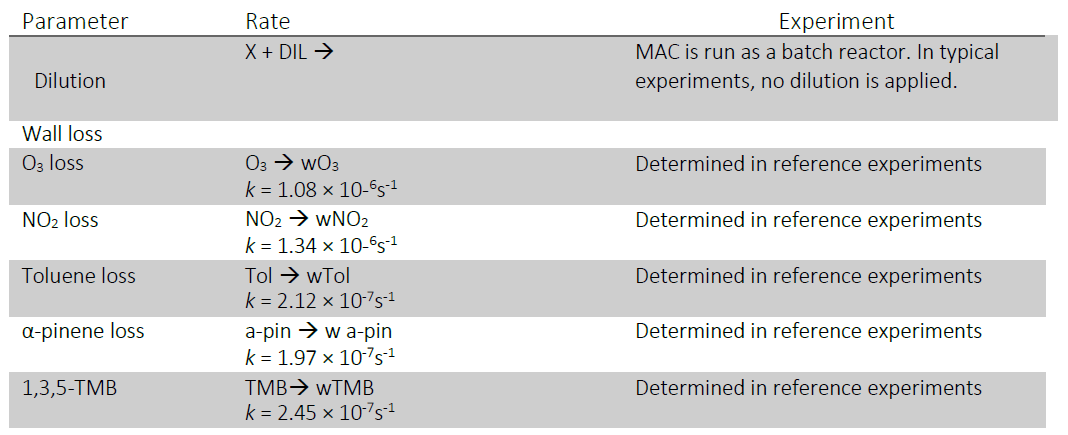 |
||||||||||||||||||||||||||||||||||||
| Description paper | MAC:
Alfarra, M. R., Hamilton, J. F., Wyche, K. P., Good, N., Ward, M. W., Carr, T., Barley, M. H., Monks, P. S., Jenkin, M. E., Lewis, A. C., and McFiggans, G. B.: The effect of photochemical ageing and initial precursor concentration on the composition and hygroscopic properties of β-caryophyllene secondary organic aerosol, Atmos. Chem. Phys., 12, 6417-6436, https://doi.org/10.5194/acp-12-6417-2012, 2012 MICC:Connolly, P. J., Emersic, C., and Field, P. R.: A laboratory investigation into the aggregation efficiency of small ice crystals, Atmos. Chem. Phys., 12, 2055–2076, doi:10.5194/acp-12-2055-2012, http://www.atmos-chem-phys.net/12/2055/2012/, 2012 |
||||||||||||||||||||||||||||||||||||



